|
|
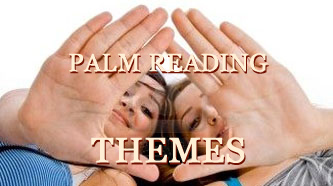
Scientific hand reading: explore the significance
of the 9 minor levels of the hand!
• Level 1: HAND BEHAVIORS
• Level 2: HAND MOTORICS
• Level 3: HAND SHAPE
• Level 4: PALM SHAPE
• Level 5: FINGER SHAPES
• Level 6: SKIN RELATED QUALITIES
• Level 7: FINGERNAILS
• Level 8: DERMATOGLYPHICS (& FINGERPRINTS)
• Level 9: (MAJOR) LINES
Discover more about hands:
• Hand Reading Research
• Hand Reading Forum
• Palm Reading Guide
• Hand Reflexology
Palm reading around the world:
• Chinese palm reading guide: Hong Kong (China)
• Palm reading: children lines & Karachi palmistry (Pakistan)
• Palm Reading: destiny lines & London palmistry (UK)
• Free psychic palm reading in New York (US)
• Indian palm reading: marriage lines & New Delhi palmistry (India)
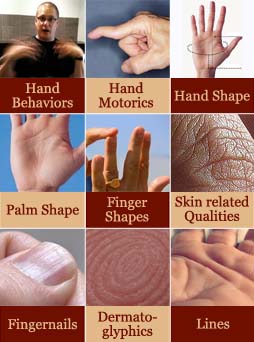
|
|
The Multi-Perspective Palm Reading themes
+ discover more background info!
An overview of the 19 themes available (so far) in 'Multi-Perspective Palm Reading' is presented below.
More themes will soon become included.
* Sections updated according the 2014 update (9 minor levels);
** Sections updated according the 2011 update (7 minor levels);
The other sections will follow in the near future ...more

Multi-Perspective Palm Reading:
background info!
The continuation of this page presents a quick introduction to various aspects of Multi-Perspective Palm Reading:
• Why study the hands?
• Common hand characteristics!
• Hands & minor physical anomalies [MPA's]
• The fundamentals of Multi-Perspective Palm Reading!
• 9 Minor levels for assessing the hand!
• The purpose of Multi-Perspective Palm Reading!
• Who can use Multi-Perspective Palm Reading?
• 17 'Multi-Perspective' Palm Reading themes!
• The image of palm reading?
- WHY STUDY HANDS? -
 Aristotle.
Aristotle.
|
In the old days, philosophers had started pondering about the design and purpose of the human hand.
A classic example was the debate between the Greek philosophers Aristotle and Pline, who debated the cause-and-effect relationship in the hand's development and the emergence of the superior human intellect.
Aristotle e.g. said:
"The Hand is the Organ of the Organs"
|
Later, in fields of medical science the hand became recognized as representing the most differentiated external part of the body.
Scottish anatomist, neurologist and philosophical theologian Sir Charles Bell described the hand in his 'The hand: its mechanism and vital endowments as evincing design' (1837) as:
"The Hand is essentially the Organ of the Mind"
|
 Sir Charles Bell.
Sir Charles Bell.
|
 Carl Gustav Jung.
Carl Gustav Jung.
|
Early in the 20th century psychotherapist & psychiatrist Carl Gustav Jung described the potential for the human hand in the fields of psychology & psychiatry; quoted from the preface of 'The Hands of Children' (Julius Spier, 1944):
"Chirology [hand reading] is an art which dates back to very ancient times. The ancient physician never hesitated to make use of such
auxiliary systems as chiromancy and astrology for diagnostic and prognostic purposes as is shown, for instance, by the book of Dr. Goclenius who lived at the end of the sixteenth century. … The totality-conception of modern biology which is based on the evidence of a host of observations and research does not exclude the possibility that hands, whose shape and functioning are so intimately connected with the psyche, might provide revealing and therefore, interpretable expressions of psychical peculiarity, that is, of the human character. ..."
|
In the 21 century the work of Prof. John T. Manning (psychologist) on the 2D:4D finger ratio attracted attention from popular media & the scientific community.
Manning writes in his 2nd book, titled 'The Finger Book' (2008):
"In this book I take a tiny sex difference in the fingers - men's tendency to have longer ring fingers relative to their index fingers than women - and use this 'finger ratio' to explain many puzzles about human behaviour and predisposition to disease."
|
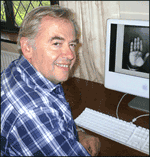 Prof. John T. Manning, who became a.k.a. 'the finger Professor'.
Prof. John T. Manning, who became a.k.a. 'the finger Professor'.
|
- COMMON HAND CHARACTERISTICS -
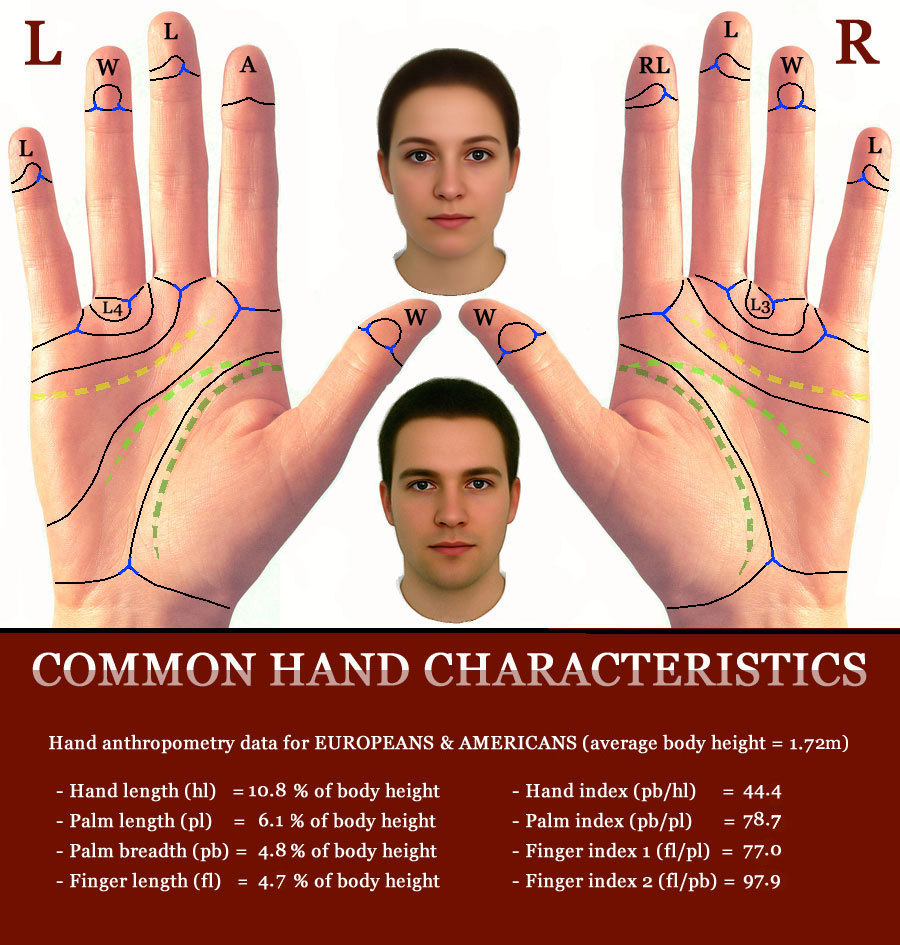
In Multi-Perspective Palm Reading the concept of a 'phantom picture' is sometimes being used to describe visually the typical hand characteristics in a specific population.
The picture above describes some of the most common hand features (dermatoglyphics + major palmar creases for the palm and the fingers), plus some hand anthropometry data based on the European population.
The section common hand characteristics presents more details.
- HANDS & 'MINOR PHYSICAL ANOMALIES'! [MPA's] -
During the 20th century science discovered that medical problems are often featured with various body characteristics that are usually not seen in healthy people.
Since these body characteristics are usually painless and harmless on their own, these are described as 'minor physical abnormalities (or anomalies)' [MPA's].
MPA's often have a genetical basis, but they they are also known to be caused by factors during pregnancy.
Interestingly, many of the MPA's are typically found on the body's extremities - including: the head, arms, legs, feet, and the hand!
Much earlier in history, the Italian philosopher Giambattista della Porta (1535-1615) had already observed that such 'body signs' typically manifest in the face or... the hands!
Internist Theodore J. Berry described in his work 'The Hand as a Mirror of Systemic Disease' (1963, p.XI):
"... a close inspection of the hands gives a greater wealth
of information of the clinical importance than does
similar scrutiny of any other part of the body."
And in 1964 a Smith & Bostian study pointed out that 71% of the MPA's tend to be found in the face or at the hands.
Later, 6 out of the 57 MPA's included in the so-called 'Waldrop scale' (1971) turned out to relate to various aspects of the hands - e.g. the hand lines ('simian crease', 'Sydney line', 'single flexion crease on the 5th finger'), finger morphology ('unusual length of the fingers', 'clinodactyly') & fingernails ('nail hypoplasia').
However, the study of MPA's is still regarder as a relatively young branch of medical science.
And many of the hand markers described in the vocabulary of Multi-Perspective Palm Reading have not yet been described as an MPA (partly because MPA-concept has not widely spread yet) - but the significance of all individual 100+ hand markers listed so far, has been confirmed in studies.
But for the majority of the listed hand markers there is a considerable list of (published) studies available which have described their significance ...more
- THE FUNDAMENTALS OF MULTI-PERSPECTIVE PALM READING! -
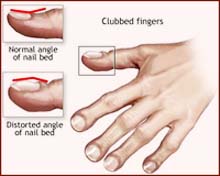 Fingernail clubbing, a.k.a. 'Hippocrates nails'.
Fingernail clubbing, a.k.a. 'Hippocrates nails'.
|
Various milestone-developments have preceeded the concept of Multi-Perspective Palm Reading:
Since the early days of the Greek physician Hippocrates (c. 460 BC – c. 370 BC) - who first described digital clubbing in patients with empyema,
the fingernails have been known as hand features that display significant clues for health related changes inside the body.
|
But the next milestone-discovery took until 1906, when physician R.L. Down described the link between the so-called simian crease/simian line [single palmar crease] and Down syndrome [trimsomy 21].
However, later studies revealed that the simian line also is linked with many other syndromes and disorders.
And thus it became appearant that the simian line in isolation can not serve as reliable a marker for any syndrome in specific, unless it is found in combination with other MPA's or markers (associated with a specific syndrome/disorder).
Likewise discoveries were made regarding certain dermatoglyphic variations (e.g. the fingerprints), which also became known as valuable diagnostic tool for various syndromes.
And it took until the 60's (soon after the genetic cause of Down syndrome was discovered) until Lionel S. Penrose was able to present the very first so-called 'phantom picture' for the hand in Down syndrome (see picture on the right).
Later likewise 'phantom picture' were developed for the hand in other syndromes and disorders, including: e.g. Fragile-X syndrome, Turner Syndrome & Klinefelter syndrome - which are known to represent the most common genetic disorders (Down syndrome also belongs to this group).
|
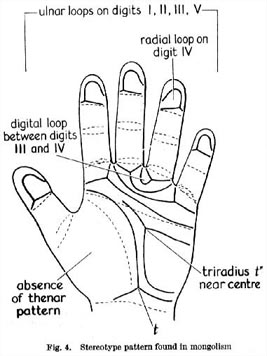 Penrose's phantom picture for the hand in Down syndrome (1963).
Penrose's phantom picture for the hand in Down syndrome (1963).
|
And the first decade of the 21th century Professor John Manning's '2D:4D digit ratio' became known as a (prenatal) marker for various diseases (e.g. heart problems) & personality related characteristics (e.g. autism).
But there's much more known about how hands can serve as an assessment tool.
For example, hand behaviors (e.g. nail biting) became known for signaling clues the relate to various biological personality characteristics (e.g. neuroticism).
However, far most of these studies do not focus on the question:
'How can hand marks & -clues be combined and used for the purpose of a hand-diagnosis?'
Mult-Perspective Palm Reading describes the way to go... via 7 dimensions of the hand!
- 9 MINOR LEVELS FOR ASSESSING THE HAND! -
Beyond the 5 major perspectives (function, proportion, skin, palm & fingers) there are seven minor levels in Multi-Perspective Palm Reading used to assess the hand:
1 - HAND BEHAVIORS, including: a-typical gestures.
2 - HAND MOTORICS, including: flexibility, flexion.
3 - HAND SHAPE, including: hand index, elemental hand shape;
4 - PALM SHAPE, including: palm shape, palmar zone proportions;
5 - FINGER SHAPES, including: finger lengths, ratio, finger tip shape;
6 - SKIN RELATED QUALITIES, including: colour, structure, hair;
7 - FINGERNAILS, including: color, morphology, structure;
8 - DERMATOGLYPHICS, including: palmar dermatoglyhps, fingerprints;
9 - (MAJOR) LINES, including: primary- & secundary creases, finger flexion creases;
NOTICE: For each hand dimension there are many features that can be assessed.
More details are presented in the pages focussed on each of the 9 minor levels!
- THE PURPOSE OF 'MULTI-PERSPECTIVE PALM READING'! -
The purpose of this new type of palm reading is to use the hand as a 'diagnostic tool', in order to study & assess worrisome or ambigue signs that may be manifest in a person's behavior- and/or health.
Multi-Perspective Palm Reading can serve for (educated) health professionals as a solid diagnostic tool for exploring the possible causes of these signs.
|
 The purpose of hand reading.
The purpose of hand reading.
|
- WHO CAN USE 'MULTI-PERSPECTIVE PALM READING'? -
This advanced type of palm reading is developed & designed for (educated) health professionals who have adopted the hand as a diagnostic 'assessment tool'.
Professionals who may use it include: psychologists, doctors, alternative therapists & other professional health care workers.
And of course: Multi-Perspective Palm Reading can serve very well as a solid COMPLEMENTARY TOOL for any (educated) palm reader / palmist / hand analyst.
Because this new advanced type of hand reading is not biased by any cultural perspective - illustrated by the fact that it is focussed on themes that relate to:
(1) well defined syndromes & diseases;
(2) psychobiological themes that are nearly all featured in the DSM IV/5 (diagnostic and statistical manual of mental disorders, which was designed to be adopted in all cultures and regions in the world) and the ICD 10 system.
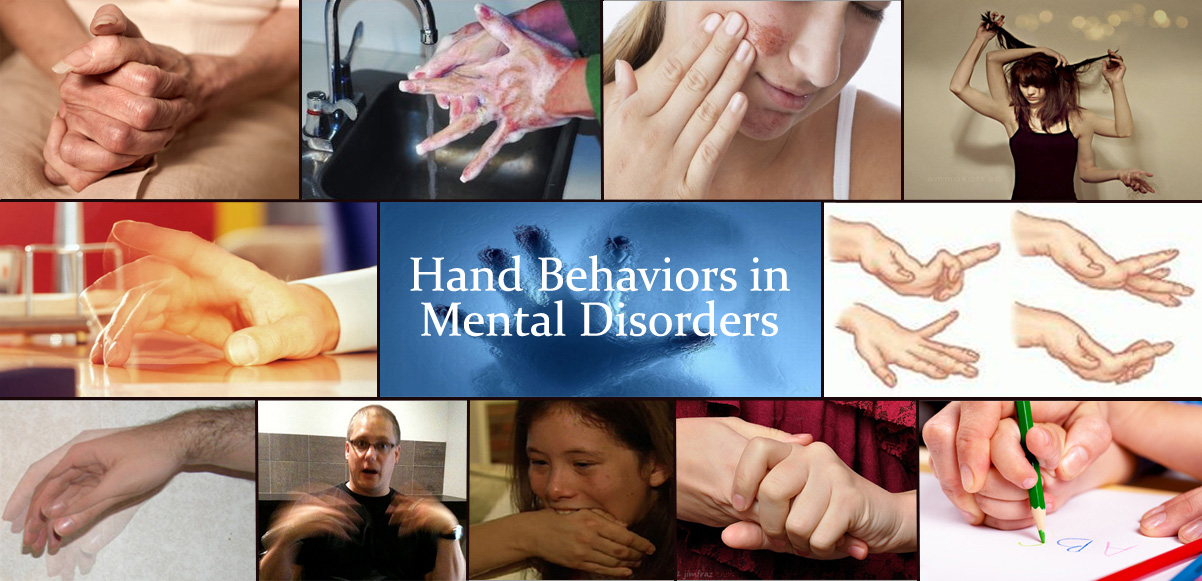
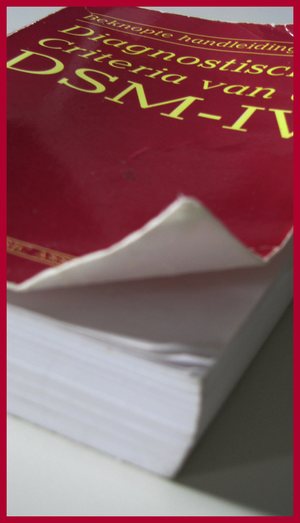 The DSM-IV diagnostic manual.
The DSM-IV diagnostic manual.
|
Interestingly, the DSM IV/5 & ICD 10 diagnostic systems include many examples of hand behaviors in mental disorders, which illustrates how hands may often play a significant role in the diagnosis process of various mental disorders and conditions!
NOTICE: The 'universal guidelines' presented by DSM IV/5 & ICD 10 have been observed & confirmed by educated professionals around the world, who are not associated with the field of hand reading at all! ...more
|
- PALM READING THEMES! -
So far, various specific THEMES have been explored by detail according the concept of Multi-Perspective Palm Reading.
For those THEMES guidelines are available derived from literally dozens of scientific studies reported by academic sources.
|
The concept of the 9 minor levels has so far been applied only to Down syndrome, but likewise detailed considerations are already available for 2 other syndromes (fragile-X syndrome & Marfan syndrome),
2 diseases (diabetes mellitus - type 2, psoriasis & rheumatoid arthritis), and 2 psychology related themes (the Big Five personality dimension Extraversion & schizophrenia).
|
 Multi-Perspective Palm Reading Themes.
Multi-Perspective Palm Reading Themes.
|
Autism is among the list of themes that will be described as well in the near future. But many other themes will follow, including: e.g. specific forms of cancer, congenital heart diseases, depression, intelligence, handedness, hyperactivity (ADHD), neuroticism, and sexe differences (see top of this page).
- THE IMAGE OF PALM READING? -
Multi-Perspective Palm Reading demonstrates how hand reading becomes a 'true' science!
Though the 'image' of hand reading suggests that hand reading gets usually associated with superstitious beliefs (palm readers & hand analysts are often assumed to be absorbed by just one single question: 'Can you predict my future?'),
the truth is that modern hand readers do not claim to be able to foretell the future!
This outdated 'image' can be traced back to the origins of classic Indian palmistry.
Illustrated for example by a 400 years old book titled 'Sariraka Shastra', which provides a translation of Vedic stanzas that describe how 'Hasta Samudrika Shastra' (translated: 'body knowledge of the hand') evolved.
The book described how Lord Vishnu was enjoying his 'yoga nidra' in the company of his consort Lakshmi, when the sea-lord Samudra arrived and began to write down the auspicious marks on the bodies of the divine couple - for the guidance of humanity...!
Obviously, the 'image' still works out as a psychological hurdle - especially for many people in the Western world!
Resulting in that many individuals are inclined to laugh about any form of 'hand reading'; but Multi-Perspective Palm Reading demonstrates how hand reading no longer is an issue 'for entertainment purposes only' ...more
|
|